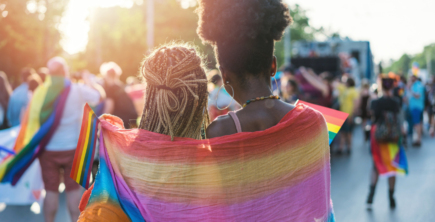
LGBT
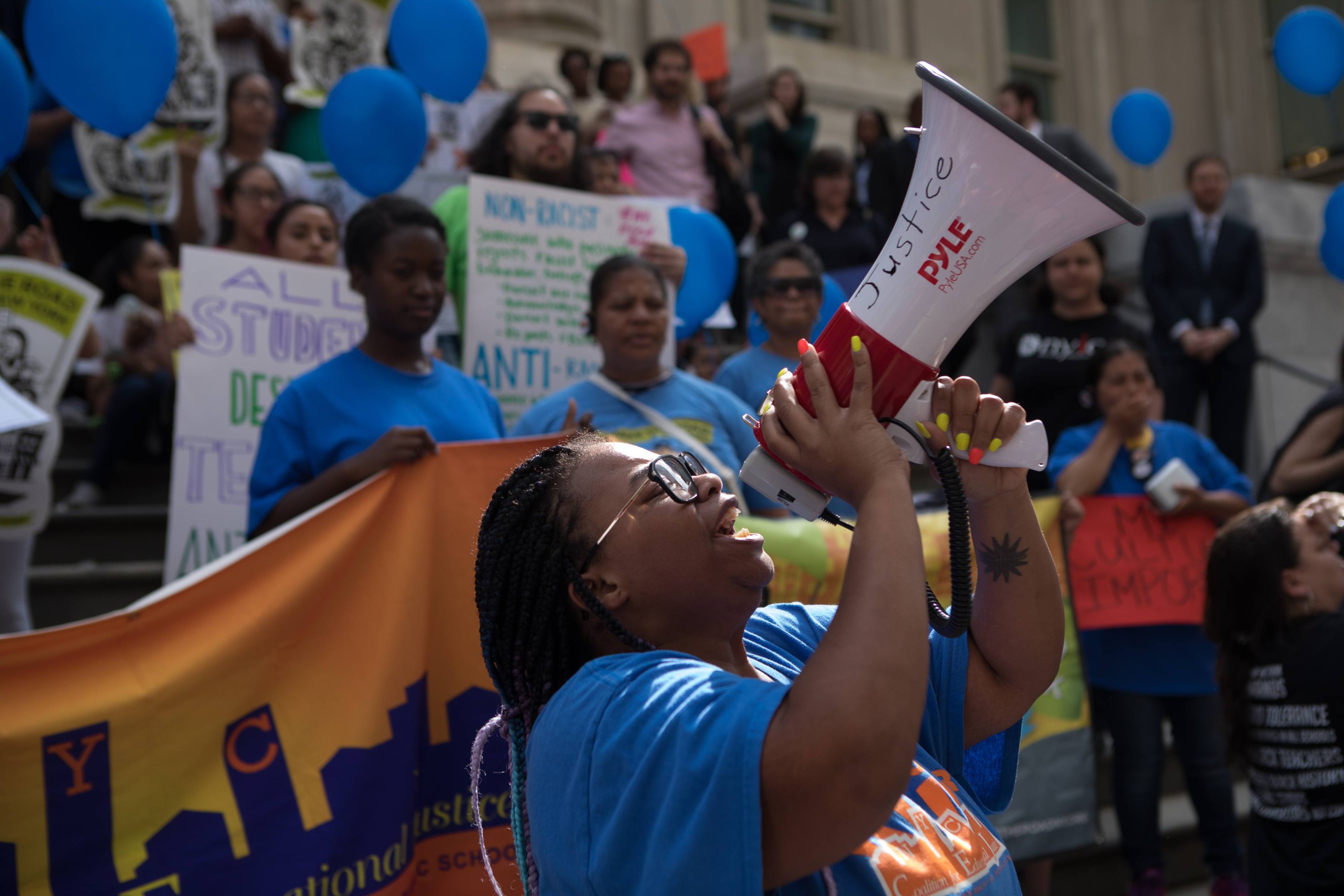
The desire to return to normal in the throes of the coronavirus pandemic is one of several perspectives highlighting the different worlds in which Americans live. For many, “normalcy”—riddled with the byproducts of colonialism, systemic oppression, and the delusion of white supremacy—is not something worth returning to. The realities we face today present opportunities for reconciliation and transformation toward a more prosperous and just society. Our nation’s educational institutions are one potential area for true change.

A member of the The NYC Coalition for Educational Justice addresses the crowd, which is demonstrating for educational justice and equity in Black, Latinx, immigrant, and low-income communities throughout New York City. © NYC Coalition for Educational Justice
Given that reigning systems of power have placed countless Americans in harm’s way since colonial times, new challenges are deepening old wounds. Natasha Capers directs the NYC Coalition for Educational Justice (CEJ), a recipient of Tides Stronger Together Fund. Capers hoped for better than what she’s encountered in the public education response to the disproportionate impacts of the pandemic. She shares, “What you would hope would’ve happened is that we spent the last six months examining the roots of the wound. What caused it? How do we treat it?”
CEJ, a parent-led coalition, organizes for educational justice and equity in Black, Latinx, immigrant, and low-income communities throughout New York City. The heightened challenges they’re seeing in this time are unsurprising to Capers and her team: “We know the roots: inequities, xenophobia, systemic racism.”
Capers points out that we have not resolved underlying infrastructure problems: “If we had solved all the things we could solve, how much more energy, brain space, and imagination would have been available to allow us to solve the harder things?” She compares the situation to an equation: “If you already know how to solve for ‘x,’ you should solve it, because ‘y’ is what you don’t know.”
Longstanding undemocratic systems—and the damaging policies they produce—actively marginalize Black and brown people, immigrant communities, and many others. Capers’ list of root causes identifies the motivations for discriminatory practices that obliterate equal access to quality education. She shares the reminder that “we know the solutions.”
One solution would be equitable school funding. Regrettably, the inequities in U.S. education are as American as our flag:
The disproportionate impacts some groups are now experiencing should come as no surprise in this context.
CEJ has been organizing for culturally responsive education for years. Capers asks, “Why is every child having an education where they see themselves and affirm themselves considered radical? What’s so radical about that?” The reality is that most white children in this country have always had access to education that fits these descriptors. The question then becomes: Why is it so radical when we assert that Black, Latinx, Asian, and all children deserve the same?
When some large school districts announced that they would not reopen in the fall, concerns abounded—for students who access resources by being physically present at their schools, and for caretakers who rely on their children going to school so that they can work to provide for their families. Capers understands the necessity and inadequacy of the move to remote schooling: “It was the decision to make, but so many students and families were left behind.” She points to English language learners, students with individualized education plans, and occupational and physical therapy students as examples of groups left without the tools they need. She also highlights the divide between those with internet access and those without—a byproduct of glaring economic inequities. “We still have not made high-speed Wi-Fi a public utility,” claims Capers. “How do you have students learning via remote instruction who cannot get online?” Waiting for those in power to do the right thing is unfortunately not a realistic option.
Brian Carey Sims directs Jomoworks, a for-profit education management consulting firm, and runs the Facilitated Community Dialogues Initiative (FCDI), fiscally sponsored by Tides Center. FCDI helps community-based organizations study how Black and brown populations across the U.S. define wellness and prosperity for themselves. The vitality—or lack thereof—of educational institutions is directly connected to the overall well-being of the communities they serve.
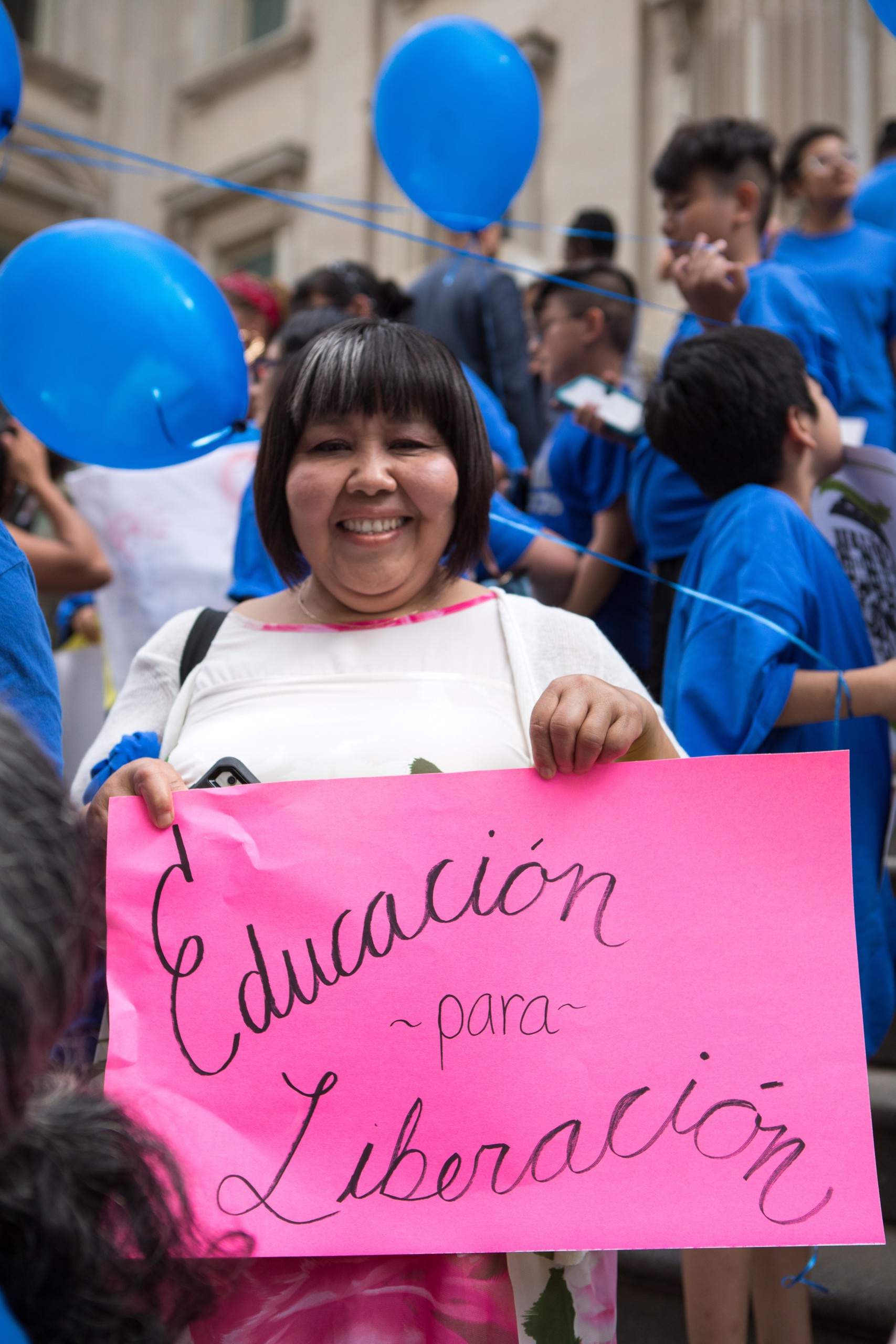
A demonstrator holds up a sign that reads, “Educacion para liberacion,” during a NYC Coalition for Educational Justice rally. © NYC Coalition for Educational Justice
In speaking about current educational conditions for Black Americans, Sims elevates pre-colonial history. Referring to contemporary Western systems of power, he says, “These things were thrust upon us. Before Maafa [African Holocaust], we had solutions.” Capers and I discussed the fate of some self-determined post-Maafa solutions as well—like the destruction of Black Wall Street in 1921 and the bombing of the Move Organization in 1985. We’ve long been resourceful and resilient in spite of systems designed to keep us reliant on external supports for survival.
Both Sims and Capers call for more investment in community. “These systems do a great job of isolating, fragmenting, [and] creating distrust,” Sims says. “We’re more likely as Black and brown people to trust and gravitate towards symbols and individuals outside of our communities. We need to trust and love and depend on each other.”
Capers raises the uncertainty of what form institutional instruction is taking: “Depending on how your school rolls it out, you could have remote instruction, but you also could just have lots of handouts.” CEJ is supporting parents to educate each other and the children in their communities by way of self-determined Parent Power Liberation Schools.
“Liberation School is the living embodiment of our culturally responsive campaign,” Capers shares. “While it won’t be perfect, it will be adaptable. We will be able to hopefully hear families and give them the things that they’re saying they want and need in real-ish time.” Sims voices a priority that affirms Capers’s perspective on the launch of CEJ’s Liberation School. He says, “Opening space for accountability and vulnerability and all the things that don’t make sense in our current world is extremely important work, even if it doesn’t happen in the material sense. If it happens in the intellectual, spiritual space, that matters.” Moving the needle on these complex issues requires more than attention to technicalities and data points.
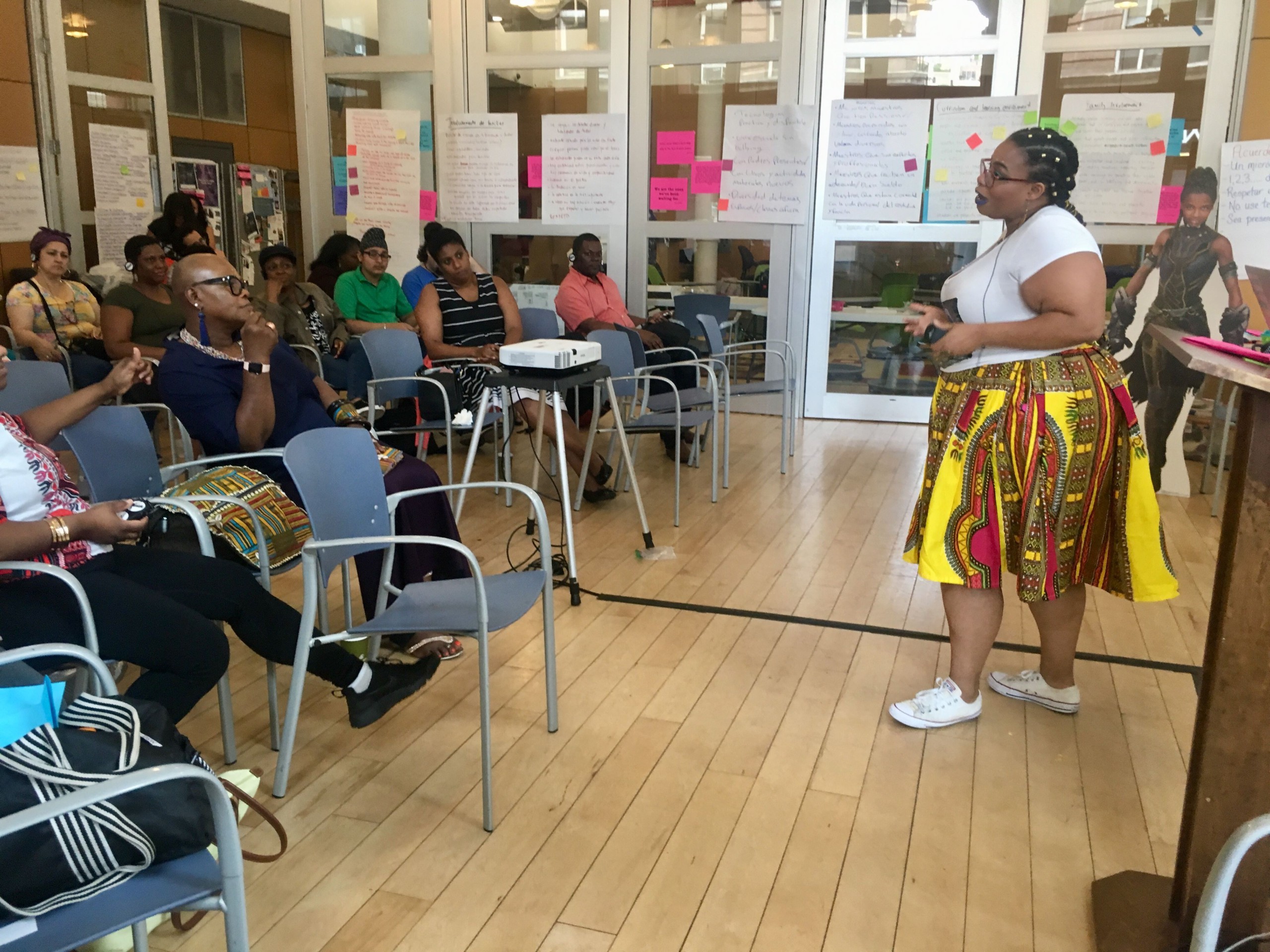
Over one hundred parents came together to exchange ideas and learn about how parents can influence and improve education in their community; definitions of advocacy, power and authority; and how to use one’s power effectively and prepare for meetings with authority figures at NYC Coalition for Educational Justice’s Parent Power School. © NYC Coalition for Educational Justice
The impacts of colonialism and white supremacy have strategically interrupted self-determination among Black Americans—in regards to education and more. For generations, proposed solutions for the inadequate educational opportunities available to Black people have come from individuals and institutions distant from the lived reality of being Black in America. What’s needed instead is generous and humble resourcing of Black-led efforts and a commitment to following their lead, as they are the ones who have the strongest insights for solutions to the problems that racist systems create.
“We’ve been working on these things for so long,” Capers says with frustration in her voice. “White supremacy is a cancer that’s really adaptable.” Just as we would in the case of an aggressive physical cancer, we need to leverage as many resources as possible to cure the destructive and shapeshifting disease of white supremacy. There’s no way to create a more just world without reconciling this problem.
To support organizations like Coalition for Educational Justice (CEJ) that are facing new challenges during the COVID-19 pandemic as they continue working to end racial inequities in education, donate to Tides’ Stronger Together COVID-19 Response Fund.

LGBT
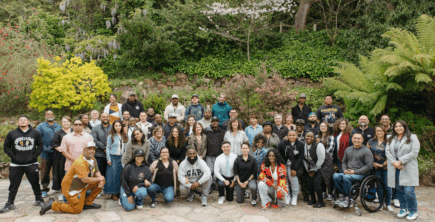
Corporate Partners

Philanthropy

Read the stories and hear the voices of social change leaders fighting for justice.